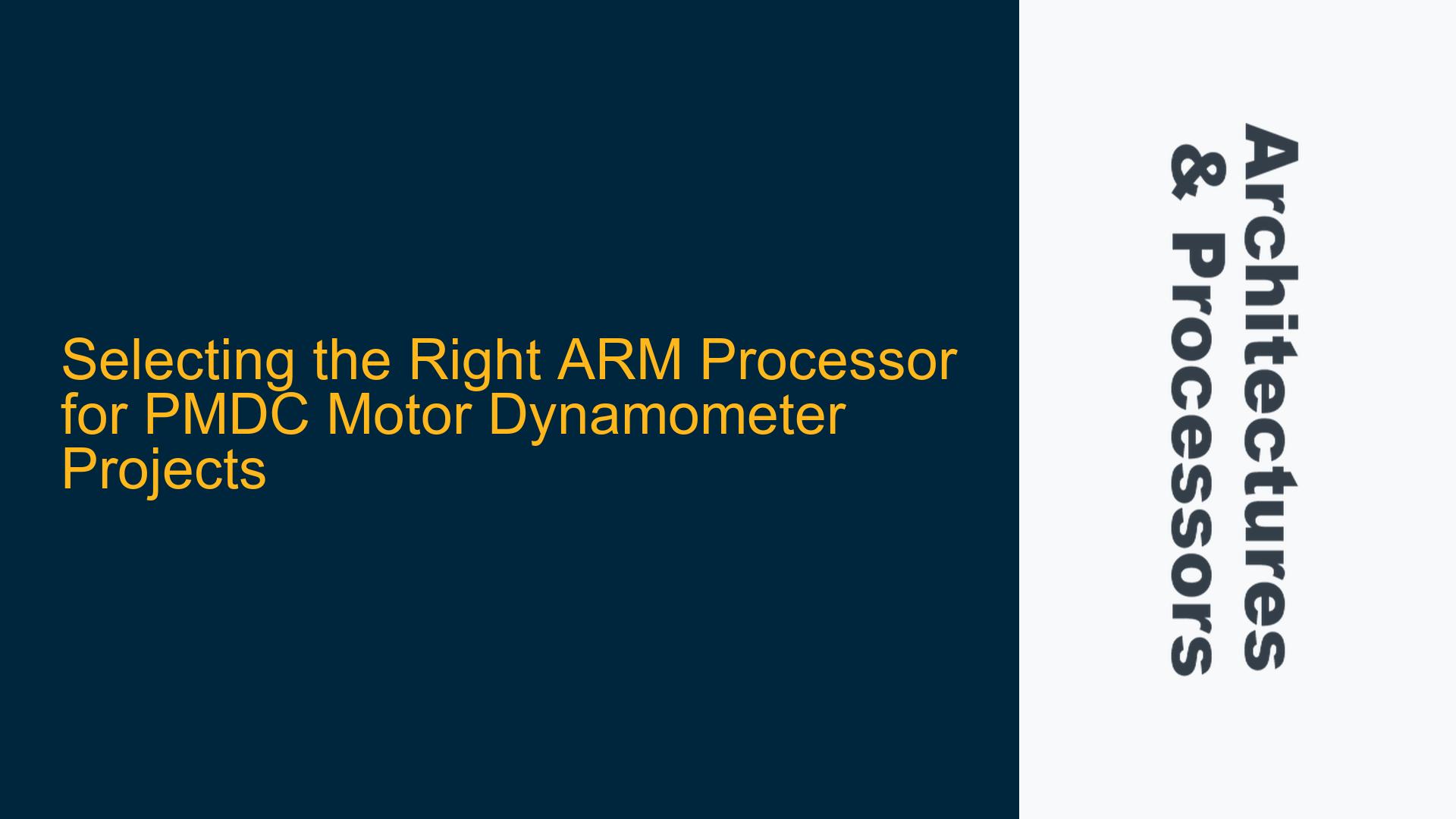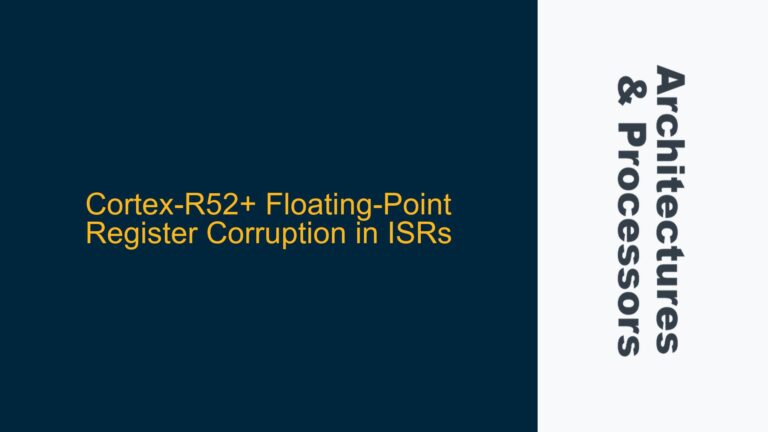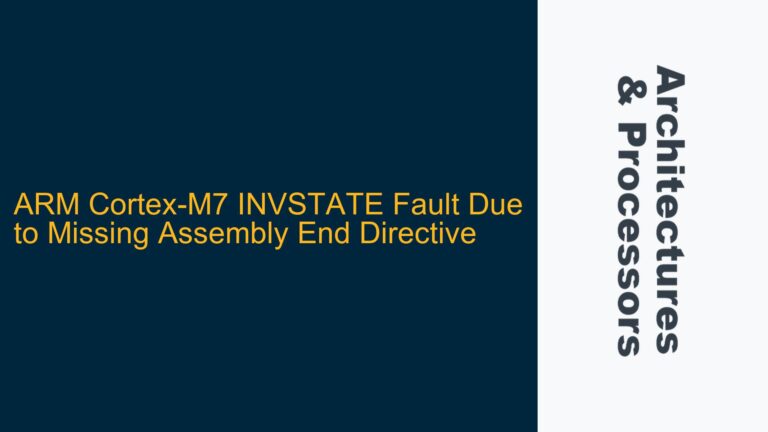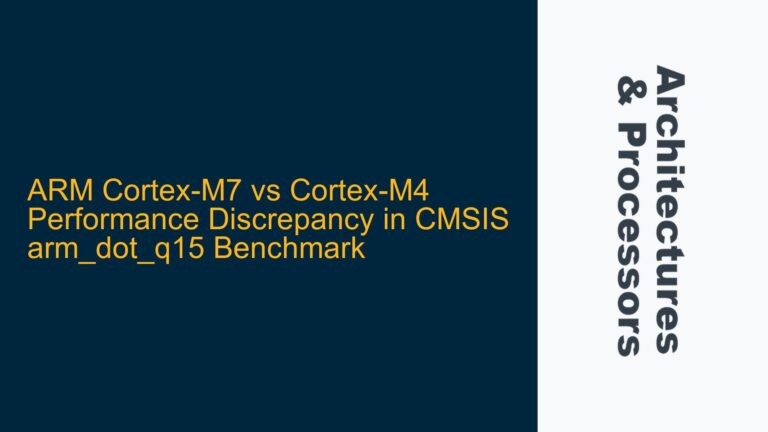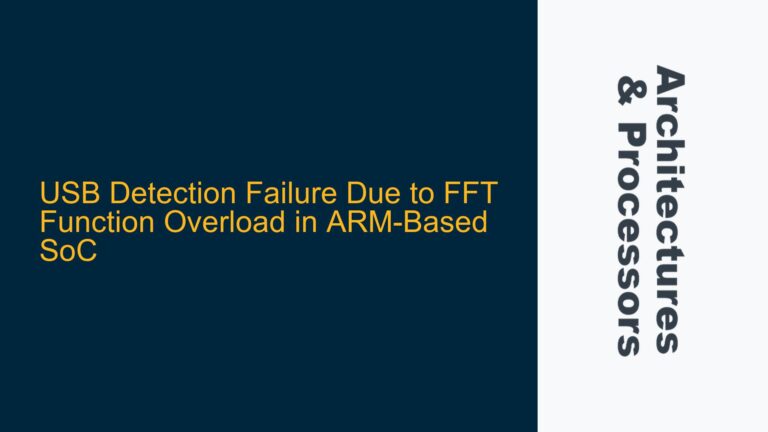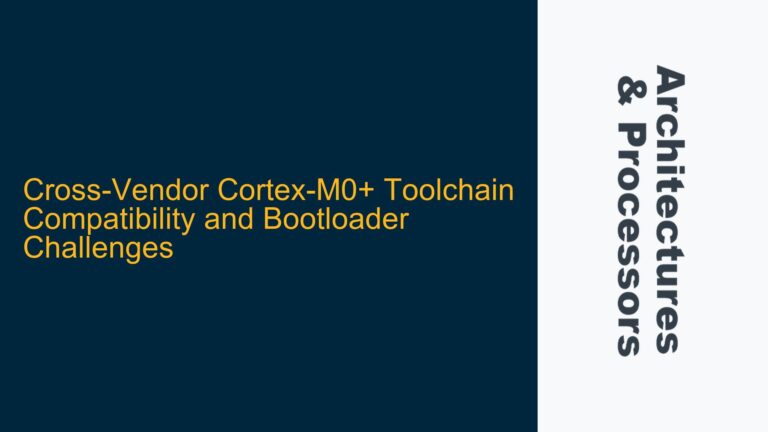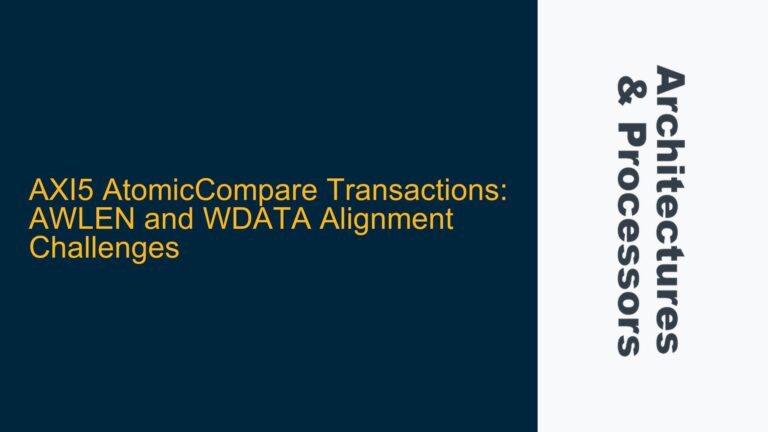ARM Cortex-M Processor Selection for Motor Parameter Analysis
When designing a dynamometer project for analyzing Permanent Magnet DC (PMDC) motor parameters such as speed, torque, current, temperature, and load, selecting the appropriate ARM processor is critical. The choice of processor impacts not only the computational capabilities but also the integration of necessary peripherals and sensors. ARM Cortex-M processors are often suitable for such applications due to their balance of performance, power efficiency, and peripheral integration. However, the selection process must consider the specific requirements of the project, including the types of sensors, data acquisition needs, and real-time processing demands.
The primary challenge lies in matching the processor’s capabilities with the project’s requirements. For instance, while most Cortex-M processors can handle the computational workload of motor parameter analysis, the availability of specific peripherals such as Analog-to-Digital Converters (ADCs), timers, and communication interfaces (e.g., UART, SPI, I2C) is crucial. Additionally, the processor must support real-time data acquisition and processing to ensure accurate and timely analysis of motor parameters.
Peripheral Integration and Sensor Interface Requirements
The first step in selecting the right ARM processor is identifying the necessary peripherals and sensor interfaces. For a PMDC motor dynamometer project, the following components are typically required:
- Speed Sensor: To measure motor rotation speed, a speed sensor such as an optical encoder or Hall-effect sensor is needed. The processor must have a timer or counter peripheral capable of capturing the sensor’s output signals.
- Current Sensor: Current measurement is essential for analyzing motor performance. This can be achieved using an ADC to measure the voltage across a shunt resistor or by integrating a dedicated current sensor module.
- Temperature Sensor: Monitoring motor temperature is crucial for preventing overheating. A digital temperature sensor such as the DS18B20 can be interfaced with the processor using a 1-Wire or I2C interface.
- Load Sensor: Measuring the load acting on the motor requires a force or torque sensor, which may output an analog signal that needs to be digitized using an ADC.
The processor must have sufficient ADC channels, timers, and communication interfaces to support these sensors. For example, the STM32F4 series of Cortex-M4 processors offers multiple ADC channels, high-resolution timers, and various communication interfaces, making it a strong candidate for such projects.
Evaluating Computational and Real-Time Processing Needs
Once the peripheral requirements are identified, the next step is to evaluate the computational and real-time processing needs of the project. PMDC motor parameter analysis involves processing sensor data in real-time to calculate speed, torque, current, and temperature. The processor must be capable of handling these calculations efficiently while also managing data acquisition and communication tasks.
Cortex-M processors are well-suited for real-time processing due to their deterministic execution and low-latency interrupt handling. However, the specific model should be chosen based on the complexity of the calculations and the required processing speed. For instance, the Cortex-M4 with its DSP extensions and floating-point unit (FPU) is ideal for applications requiring complex mathematical operations, such as torque and power calculations.
Additionally, the processor’s clock speed and memory capacity must be considered. Higher clock speeds enable faster data processing, while sufficient RAM and Flash memory are necessary for storing program code and data. For example, the STM32F407VG offers a clock speed of up to 168 MHz, 1 MB of Flash memory, and 192 KB of RAM, making it suitable for demanding motor analysis tasks.
Implementing Data Acquisition and Processing Strategies
With the processor selected, the next step is to implement effective data acquisition and processing strategies. This involves configuring the ADC, timers, and communication interfaces to acquire sensor data accurately and efficiently. For example, the ADC should be configured to sample at a rate sufficient to capture the motor’s speed and current variations, while timers should be set up to capture encoder pulses for speed measurement.
Data processing algorithms must be optimized for real-time execution. This may involve using fixed-point arithmetic for efficiency or leveraging the Cortex-M4’s DSP instructions for faster computation. Additionally, implementing data synchronization techniques such as double buffering can help ensure that data acquisition and processing occur without interruption.
Finally, the system should be tested and validated to ensure accurate and reliable motor parameter analysis. This involves verifying the accuracy of sensor measurements, the correctness of data processing algorithms, and the overall system performance under various operating conditions.
In conclusion, selecting the right ARM processor for a PMDC motor dynamometer project involves careful consideration of peripheral integration, computational needs, and real-time processing requirements. By following a structured approach to processor selection and system implementation, it is possible to create a robust and efficient motor analysis system.
